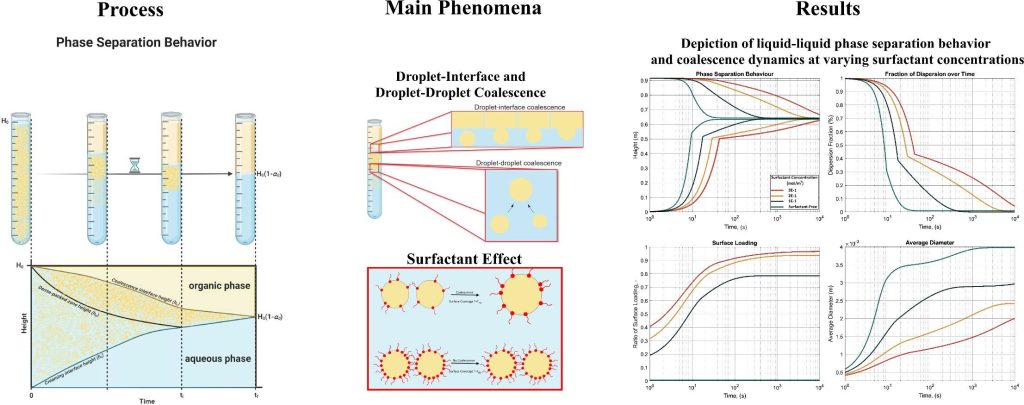Understanding Liquid-Liquid Phase separation and the Impact of Surfactants: Insights from Our Recent Research
In my latest research update, we delve into the intriguing role of surfactants in liquid-liquid phase separation. Our study reveals how these molecules accumulate at fluid interfaces, preventing droplet coalescence and stabilizing emulsions. We also explore the modeling of surfactant effects using adsorption isotherms and population balances. This approach allows us to predict the surface area available for surfactant adsorption and quantify its impact on phase separation.



